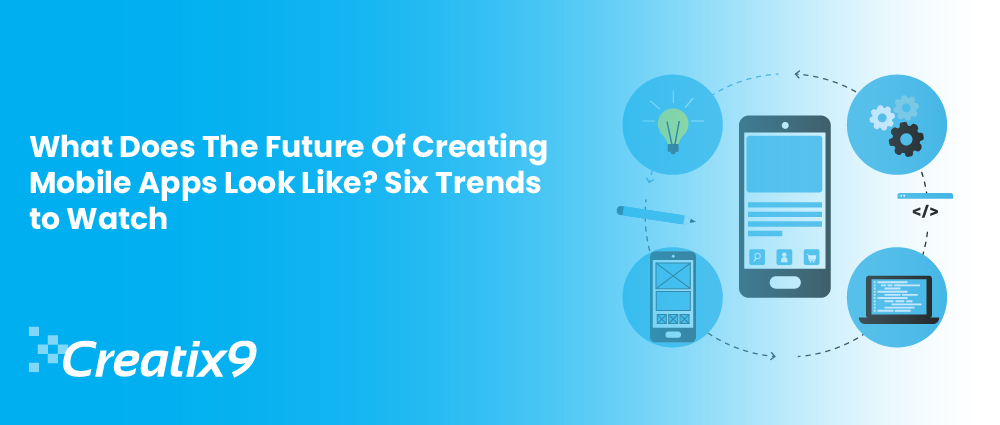
Nowadays, cellphones are so common that it’s simple to forget that mobile apps are very new. Since the first mobile phone was developed in the early 1970s, mobile app development software has seen numerous revisions, drastically altering our way of life.
There are no indications that the pace of mobile app development software is slowing. Mobile app development is constantly being influenced by cutting-edge technologies like AI, VR, AR, and blockchain, and apps that power mobile devices and wearables frequently take center stage. What is the outlook for developing mobile applications?
How the Creation of Mobile Apps Has Changed Over Time
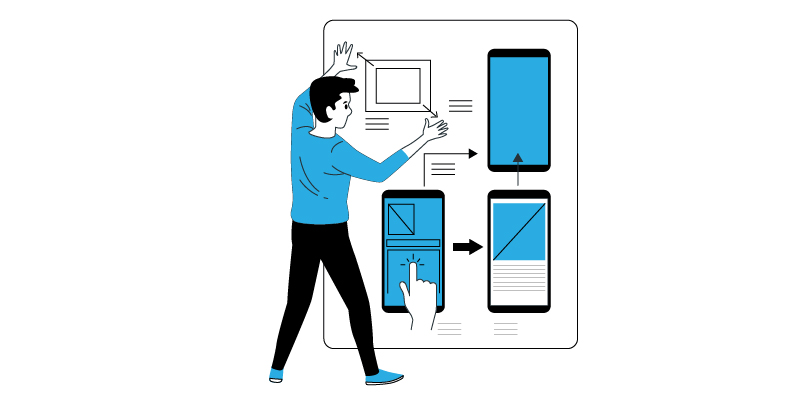 Although the first handheld mobile phone was created in 1973, it took another 20 years before the first cell phones that were widely available began to lay the groundwork for modern technology. The first phone featuring a touch screen and integrated apps, such as a contact book and calendar, was IBM’s Simon, which was unveiled in 1993.
Although the first handheld mobile phone was created in 1973, it took another 20 years before the first cell phones that were widely available began to lay the groundwork for modern technology. The first phone featuring a touch screen and integrated apps, such as a contact book and calendar, was IBM’s Simon, which was unveiled in 1993.
The Blackberry 5810 with Java support followed in 2002. This revolutionary technology paved the way for the quick creation of mobile apps by integrating apps like linked wireless email. Java is still the main programming language used to create Android-based apps today.
Google and Apple both introduced online app shops in 2008. Within nine months after its debut, Apple’s App Store had one billion downloads.
Almost 230 billion new mobile app downloads occurred on Apple and android app development services in the UK devices in 2021.
Apps developed at an exponential rate as mobile phones proliferated and became ubiquitous. Many of today’s apps can predict the user’s needs and deliver information even before being asked to do so, unlike the initial apps, which mostly presented information depending on inputs supplied by the user.
In the upcoming years, mobile app developers will continue to investigate the following six trends.
-
Setting the Stage for 5G
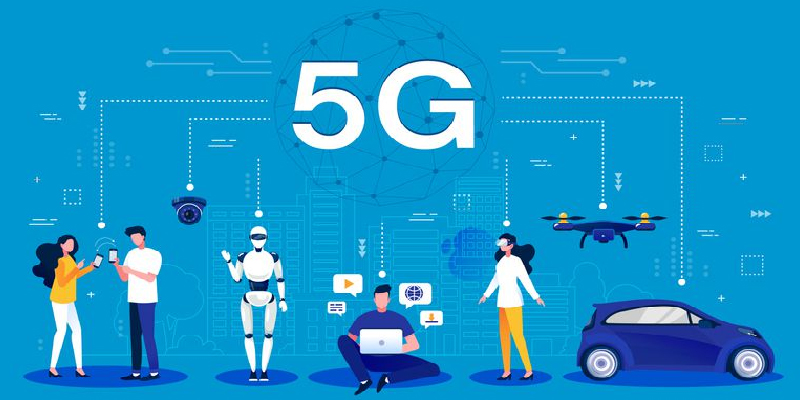 Although fifth-generation wireless technology (5G) has been the subject of much excitement for more than a decade, most carriers didn’t begin bringing out 5G service until 2021.
Although fifth-generation wireless technology (5G) has been the subject of much excitement for more than a decade, most carriers didn’t begin bringing out 5G service until 2021.
5G is centered on speed. It operates at speeds 100 times faster than most current networks, making it exponentially quicker than current 4G technology. Connectivity is important because it enables users to connect with wearables, machines, and other devices in addition to phones, from individual users to enterprise networks. Information is delivered in milliseconds thanks to its much faster speed, lowering latency and improving user experience.
Simple to complex use cases can be found. Users watching HD videos without buffering or quality loss on their devices might be a straightforward use case. A 5G-enabled healthcare ecosystem, which includes apps, the internet of things (IoT), and wearables, might help patients better manage their health and quality of life, according to a report by PwC. This may assist in detecting diseases earlier and lower healthcare expenses by about $2,000 each patient.
-
AR And VR Go Beyond Video Games
Using augmented reality (AR) technology, players may play Pokémon Go while strolling through their neighborhood. AR app development superimposes artificial pictures and objects on real-life things. Virtual reality (VR), on the other hand, fabricates a setting. Users of Meta’s Oculus Quest 2, for instance, can attend concerts made in an immersive world, travel to new places, and exercise all from the comfort of their living rooms. But, AR and VR are no longer just for video games; these technologies are quickly entering new markets including retail, real estate, and tourism.
With the help of an unexpected catalyst called COVID-19, the application of augmented reality technology in the real estate sector is exploding. After the pandemic, many people found it unsafe to attend open homes in person. In response, quick app development made it possible to do virtual home tours.
In late 2020, Matterport, a platform for 3D virtual tours, developed an iOS app development services that allowed home sellers to scan their properties using the LiDAR sensors on their smartphones or tablets. Before, that capability could only be achieved with pricey camera gear. 63 percent of buyers who watched virtual walk-throughs of homes in late 2020 made offers on houses they hadn’t actually visited, according to Redfin, a real estate agency.
-
AI is Going Nowhere
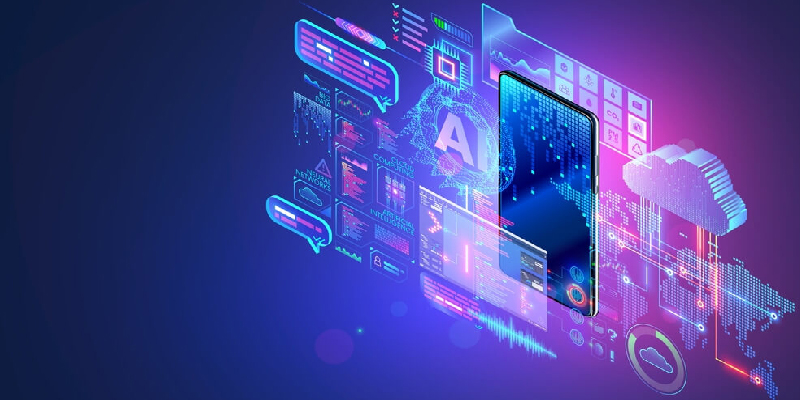 Although artificial intelligence (AI) is by no means a new technology in mobile app development software in the UK, app capabilities will advance along with AI and machine learning. For instance, computers can employ sophisticated machine learning to learn from previous user behaviour and then pull data to forecast potential future events.
Although artificial intelligence (AI) is by no means a new technology in mobile app development software in the UK, app capabilities will advance along with AI and machine learning. For instance, computers can employ sophisticated machine learning to learn from previous user behaviour and then pull data to forecast potential future events.
Future app development may integrate AI more prominently in areas like facial and speech recognition, which are biometric indicators that can improve safety features. AI and machine learning can be used by businesses, particularly those in the insurance and financial industries, to improve user safety and data security as well as to help detect fraud. The potential annual value of AI for global banking is estimated by McKinsey to be over $1 trillion.
The need of detecting and combating fraud will definitely increase as more people use their phones and wearables as payment methods. In 2020, there were 2.8 billion mobile wallets in use worldwide, and by 2025, there may be 4.8 billion. Fraud detection businesses are developing AI-based solutions for banks and merchants to assist decrease false positives, boost fraud detection, and shorten investigation times as increasingly sophisticated online transactions are carried out using those wallets.
-
Blockchain Extends Past Cryptocurrencies
Although the name “blockchain” is most frequently related to cryptocurrencies, the underlying technology is being applied in a variety of novel ways. A blockchain is essentially a secure digital ledger for recording transactions. It is practically hard to change or remove a transaction after it has been added to the blockchain. As a result, blockchain technology can be used to secure identities and track digital assets.
Blockchain technology is being used more and more by mobile wallets and person-to-person (P2P) payment apps to increase transaction speed and security. Over 68 million people are thought to have blockchain wallets right now. 5.6 million blockchain wallet apps were downloaded in January 2021.
Expect to see blockchain technology integrated with IoT applications and smart contracts across numerous industries in the future years due to the increased security features. For instance, IBM discovered that using blockchain technology helped shipping and logistics businesses cut costs, improve supply chain inefficiencies, and resolve disputes.
-
Wearables Are Increasingly Capable
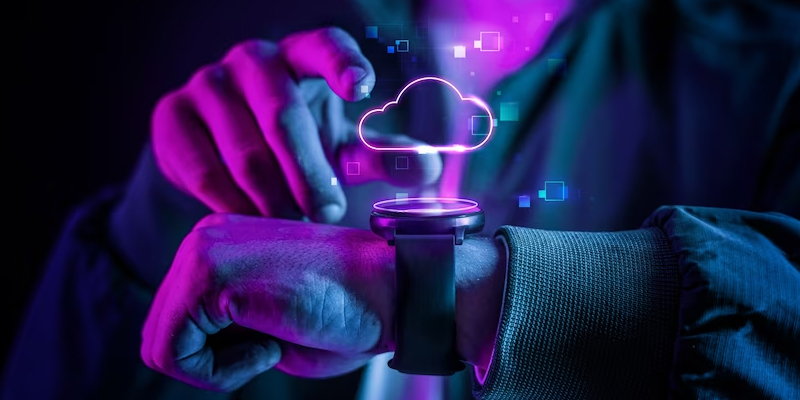 Watches, earphones, and other smart devices are examples of wearables, as are some types of apparel. Wearables can perform a variety of tasks, from voice call activation to assisting users in tracking their daily step count. Almost a billion wearables with connectivity are in use globally. The market for wearable technology was estimated to be worth $116 billion in 2021, and it is expected to continue to develop rapidly. By 2026, it’s predicted to reach $265 billion.
Watches, earphones, and other smart devices are examples of wearables, as are some types of apparel. Wearables can perform a variety of tasks, from voice call activation to assisting users in tracking their daily step count. Almost a billion wearables with connectivity are in use globally. The market for wearable technology was estimated to be worth $116 billion in 2021, and it is expected to continue to develop rapidly. By 2026, it’s predicted to reach $265 billion.
The largest portion of wearables are consumer electronics. Nonetheless, there is growing interest in using them for tasks beyond than straightforward step tracking, particularly in the healthcare industry. For instance, the U.S. Food and Drug Administration has approved various wearables, including Fitbit and Apple Watch, for an electrocardiogram app to detect heart abnormalities.
Smart app capabilities connected to security are further things you may anticipate from wearables in the near future. Recently, Apple and Schlage collaborated to develop smart locks that can be accessed with an ios app development services in the UK or Apple Watch. A digital house key can be added by users to their mobile smart wallet.
-
Security Issues Become More Urgent
Concerns over consumer privacy and security are growing as more personal data is shared online. Customer fears about their personal information being shared are not unfounded. Although consumer data is routinely collected to improve services, especially in use cases using AI and machine learning, consumer concerns are not unfounded.
In a recent analysis of well-known android app development services in the UK, Synthesis discovered that 63 percent of them featured open-source parts with known security flaws. Because of this, a lot of customers are vulnerable to having their information breached or stolen, which may harm their app experience or undermine their trust in it.
To assist in resolving security challenges like these, two technologies are emerging. One is biometric authentication, which verifies a user using voice, fingerprint, eye, or other biometric data.
What Is The Outlook For Developing Mobile Applications?
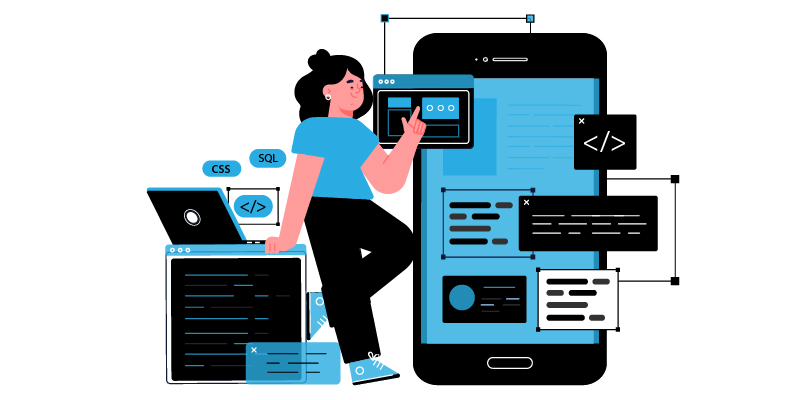 The use of current technologies and the creation of new technologies will support the expansion of the mobile app market. Developers have a clear incentive to join the action: By 2025, revenue from mobile app development software is expected to reach over $600 billion, according to projected growth trajectories. And that seems to be just a down payment on the benefits of developing mobile applications.
The use of current technologies and the creation of new technologies will support the expansion of the mobile app market. Developers have a clear incentive to join the action: By 2025, revenue from mobile app development software is expected to reach over $600 billion, according to projected growth trajectories. And that seems to be just a down payment on the benefits of developing mobile applications.
Conclusion
The unquestionable solution for organisations to utilise seamless connectivity with customers and prospects is mobile applications. Mobile applications have grown to be associated with marketing techniques due to interactive communication and increased adoption of new goods and services. To fully enjoy the benefits, you must be aware of both current and upcoming trends. If you are looking for mobile app development or top digital marketing agency in the UK, then get in touch with Creatix9.

